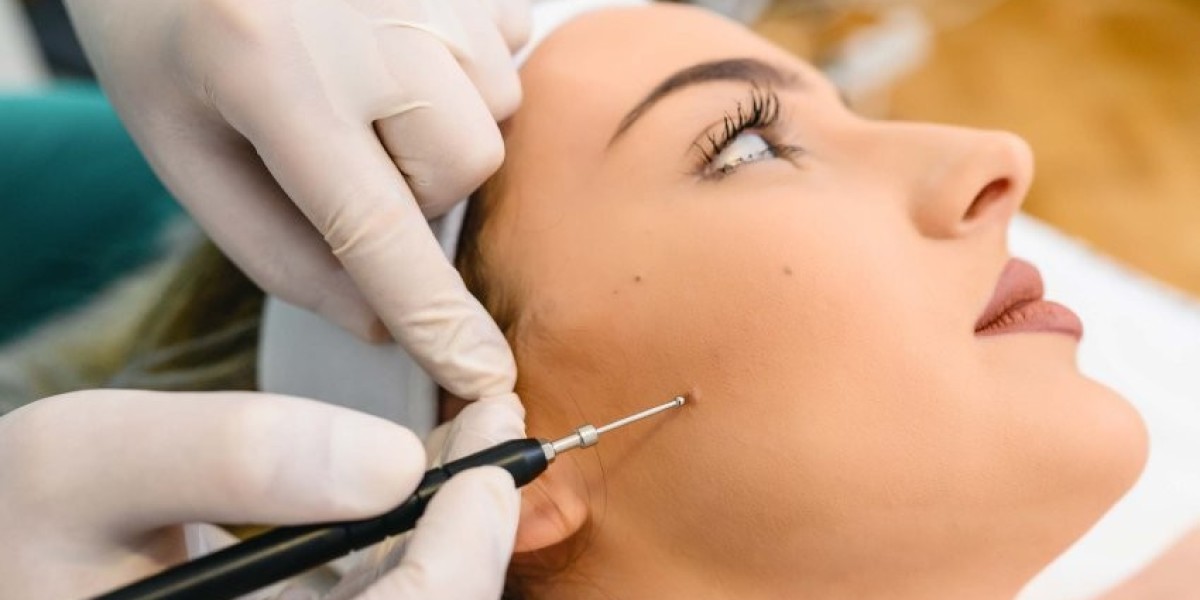Top Mole Removal Treatment Options:
- Surgical Excision: This involves cutting out the mole and a small area of surrounding skin. It’s often used for deeper or larger moles and may require stitches. A small scar is usually left behind, but it tends to fade over time.
- Laser Treatment: This method uses a focused laser beam to vaporize the mole tissue. It’s a good option for smaller, flat moles, especially in sensitive areas like the face. Laser treatment is minimally invasive and has a shorter recovery time.
- Cryotherapy: This technique freezes the mole with liquid nitrogen, causing it to eventually fall off. It’s a simple procedure suitable for smaller, superficial moles. The area may become red and blistered before healing.
- Electrosurgery: This method uses heat generated by electrical currents to remove the mole. It’s precise and effective, particularly for moles that are not cancerous. Electrosurgery may or may not require stitches, depending on the depth of the mole.
What are the advantages of surgical mole removal?
The main benefit of having a mole removal procedure is that your healthcare provider can run tests to determine if the mole is skin cancer. If you need treatment for skin cancer beyond mole removal, you’ll be able to start it right away, which may reduce the chances that your cancer will spread (metastasize) to other body parts. Additionally, many people who have mole removal procedures are happy with how they look after healing.
What are the risks or complications of this procedure?
When your dermatologist removes a mole in their office, it’s a low-risk procedure. But like all procedures, there are some risks. Risks of mole removal procedures include:
- Bleeding.
- Scars (that may or may not be noticeable).
- Infection.
- Nerve damage.
- The mole may come back (recur).
What is the recovery time?
Healing time depends on your overall health and the size of the mole you had removed. It’ll likely take 2 to 3 weeks to heal from mole removal. During this time, you’ll be able to do your daily activities, but may have a little soreness. To promote healing and prevent infection, you should follow your healthcare provider’s instructions about wound care.
Mole removal aftercare:
Following mole removal, you’ll have a wound that you should keep clean, moist and covered. Be sure to change the dressing daily or as instructed by your healthcare provider. After you’ve healed, be sure to apply sunscreen to the area when it’s exposed.
Mole Removal Treatment Cost in Pune:
The cost of mole removal treatment in Pune can vary depending on several factors:
- Type of procedure chosen (laser, surgery, cryotherapy, or electrosurgery)
- Size, depth, and location of the mole
- Number of moles to be removed
- Doctor’s expertise and clinic facilities
At Leela Superspeciality Hospital Wakad, Dr. Kiran Ardad Mane offers personalized treatment plans that are both safe and affordable. Whether you’re looking for cosmetic improvement or medical evaluation, she ensures transparent guidance & value-based care.
Why Choose Dr. Kiran Ardad Mane?
- 10+ years of experience in dermatology and cosmetology.
- Trusted by thousands of patients in Wakad and PCMC.
- Offers advanced mole removal, laser and surgical treatments.
- Practicing at Leela Superspeciality Hospital, Wakad, known for quality care.
- Recognized as one of the best dermatologists in Pune.
Conclusion:
For safe and effective mole removal treatment in Pune, trust the expertise of Dr. Kiran Ardad Mane at Leela Superspeciality Hospital Wakad. Whether it’s laser, surgery, cryotherapy or electrosurgery, she offers personalized care with minimal downtime and lasting results. Book your consultation today with one of the best dermatologists in Wakad and take the first step toward clear, confident skin.






